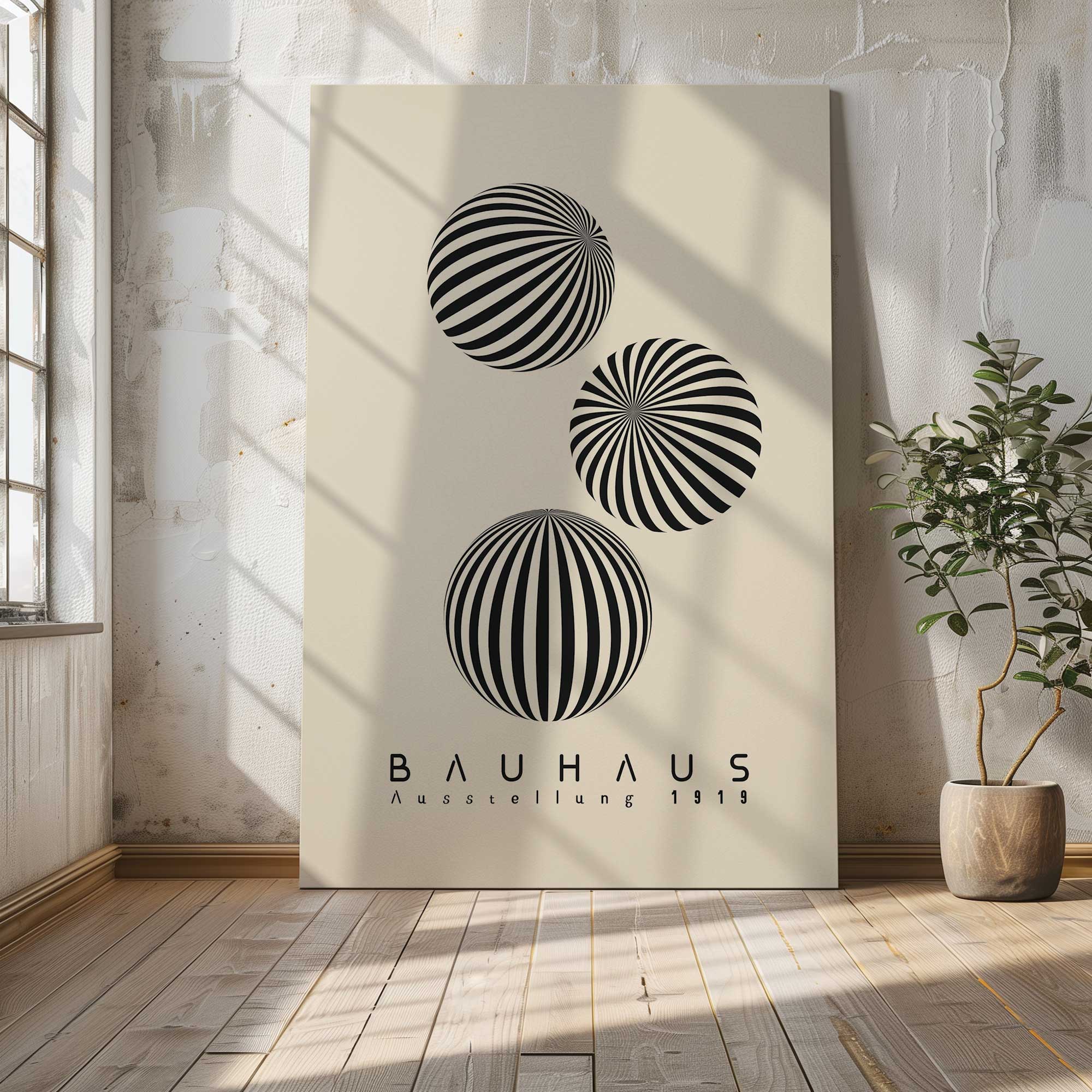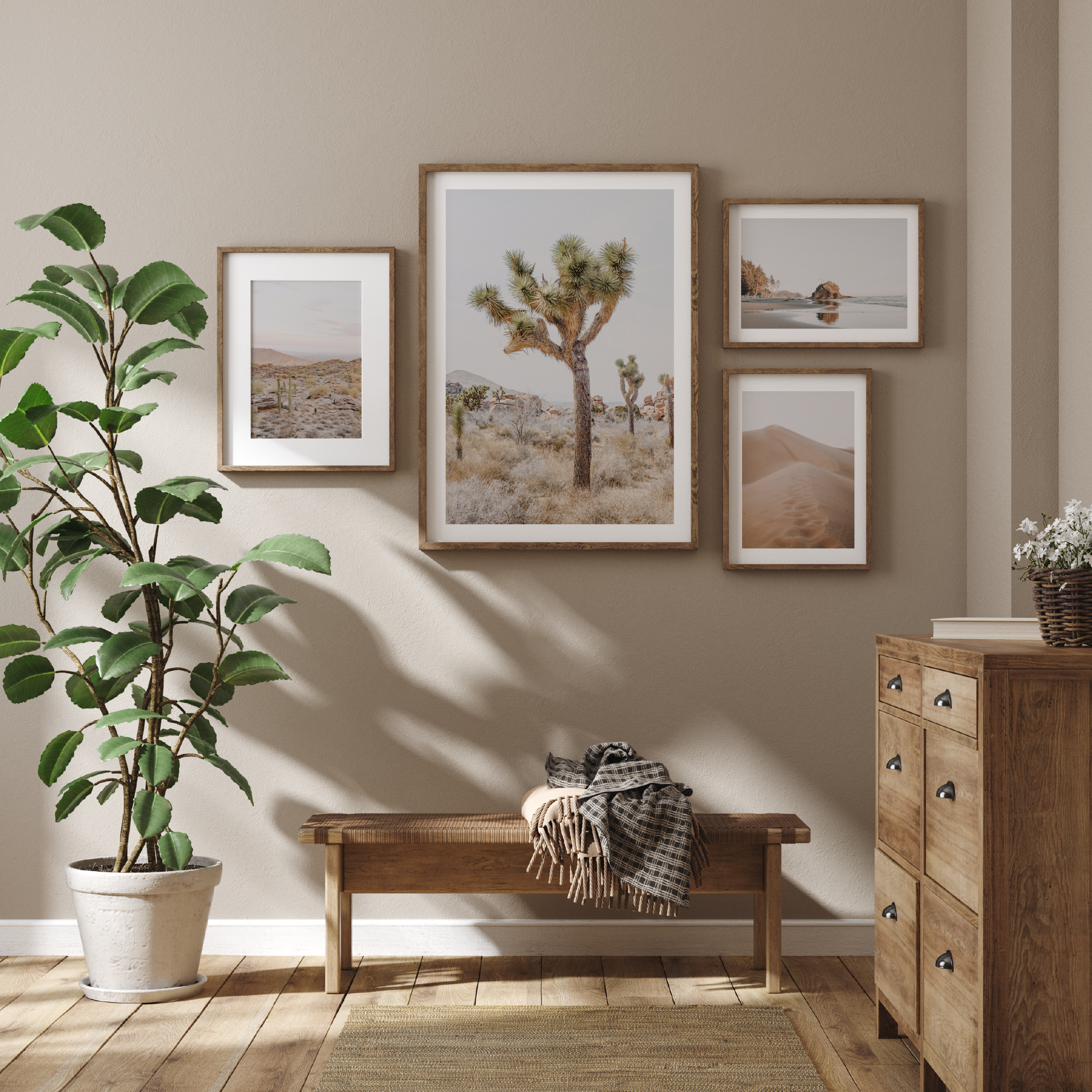Art can elevate a room, bringing character, depth, and visual harmony to your home. However, the impact of wall art isn't only about the piece itself but also its size. Choosing the right dimensions for your artwork can make or break a space—it's about balance, coverage, and a sense of proportion. In this blog post, we'll help you navigate how to size art correctly for your wall, whether you're looking to add a bold, large art piece or combine multiple smaller pieces to create a gallery effect.
How to Fill a Large Wall with Art
When working with large, open wall spaces, the key is understanding how much of that wall should be filled. A good rule of thumb is to aim for wall art that covers around 60-75% of the wall’s width, especially if the artwork will be a central visual element.
For example, if you have a wall that’s 10 feet wide, you might want to fill roughly 6 to 7.5 feet of that space with art. This could be in the form of a single large piece of artwork, such as Frametolia’s selection of oversized landscape canvas prints or abstract canvases. These kinds of pieces work exceptionally well behind a sofa, above a bed, or in large dining areas. Our large art collection includes stunning options that can effortlessly make a statement in any room.
If you prefer a more dynamic arrangement, another effective way to fill a large wall is through a gallery wall. Gallery walls combine several smaller or medium-sized pieces into an artistic collective, giving flexibility in arrangement and enabling personal storytelling. For example, try grouping different framed artworks from our standard-sized art collection, arranging them in a balanced way with roughly equal space between each frame. Aim for the gallery to have the same overall width guideline—60-75% of the wall—keeping the composition cohesive.
How to Choose Art for a Large Wall
Choosing the right art for a large wall involves more than size; it’s also about the nature of the artwork and how it relates to the rest of your space. Here are a few approaches:
- • Single Large Statement Piece: A large, striking piece of artwork can anchor a room and create a focal point. For living rooms, positioning an oversized framed print from Frametolia above a sofa can work wonders. If your space has a neutral color palette, a large colorful abstract piece can add a vivid pop, while a monochromatic print can help maintain a calm, cohesive feel.
- • Diptychs and Triptychs: Using two or three complementary pieces (often called a diptych or triptych) can be an ideal way to fill a larger wall while adding subtle variation. For example, you might consider a nature-themed triptych where each piece shows different perspectives of the same scene, creating a panoramic effect. Frametolia’s art collection features several triptychs designed to flow beautifully, perfect for filling larger wall expanses like hallways or master bedrooms.
- • Gallery Arrangements: For a more eclectic style, curate a gallery wall. A gallery wall works best in living areas or long corridors, adding interest and movement to what would otherwise be an empty wall. The key is to balance your pieces, mixing different sizes, themes, and frame finishes while keeping a consistent overall aesthetic. You might start with a large framed anchor piece from Frametolia and surround it with smaller complementary works, such as photographs or illustrations in our popular standard art sizes (e.g., 12"x18" or 16"x20").
How to Arrange Art on a Large Wall
Once you’ve selected the pieces you love, the arrangement becomes crucial. Here are several layout ideas to make the most of your wall space:
Single Large Piece as a Focal Point
For large, empty walls, a single large piece can offer a dramatic focal point. Ideally, the center of your artwork should be at eye level, roughly 57-60 inches from the floor, for optimal viewing. A Frametolia piece sized around 36"x48" or larger can often fit this need perfectly, offering substantial coverage without overwhelming the room.
Symmetrical Multi-Piece Layout
If you’re combining multiple pieces, symmetry helps create a sense of order. Arrange two or three similar-sized framed artworks horizontally or vertically, leaving even spacing—about 2-3 inches—between each piece. This approach works well in formal areas like dining rooms, where structure and elegance are key.
Asymmetrical Gallery Wall
An asymmetrical arrangement is ideal if you’re working with artwork of different shapes and sizes. Start with the largest piece slightly off-center, and build outward using smaller artworks. Maintaining consistency with frame colors (such as Frametolia's classic black, white, or natural wood frames) will help keep an eclectic collection looking unified. To create balance, imagine an invisible line through the center of your gallery, ensuring weight is distributed evenly on either side.
Filling Your Space with Art that Fits Perfectly
Art size and arrangement are just as important as the subject matter itself when it comes to enhancing your home. To create the perfect look, consider not only the wall's size but also how your chosen pieces complement your existing furniture and decor. Whether you decide on a single oversized piece from Frametolia's large art collection or prefer a thoughtfully curated gallery wall using our versatile, standard-sized framed prints, there's a solution to match every space and style.
When selecting art, remember that proportion is key—art that is too small can feel lost, while art that is too large can feel overpowering. By using our guidelines and suggestions, you can confidently transform any wall in your home into a captivating visual display.
Discover our collection of large statement pieces and assorting of wall frames to find the perfect match for your home’s walls at Frametolia. With high-quality craftsmanship, eco-friendly materials, and designs to fit any aesthetic, Frametolia helps make your vision for wall decor come alive. Happy Decorating!










